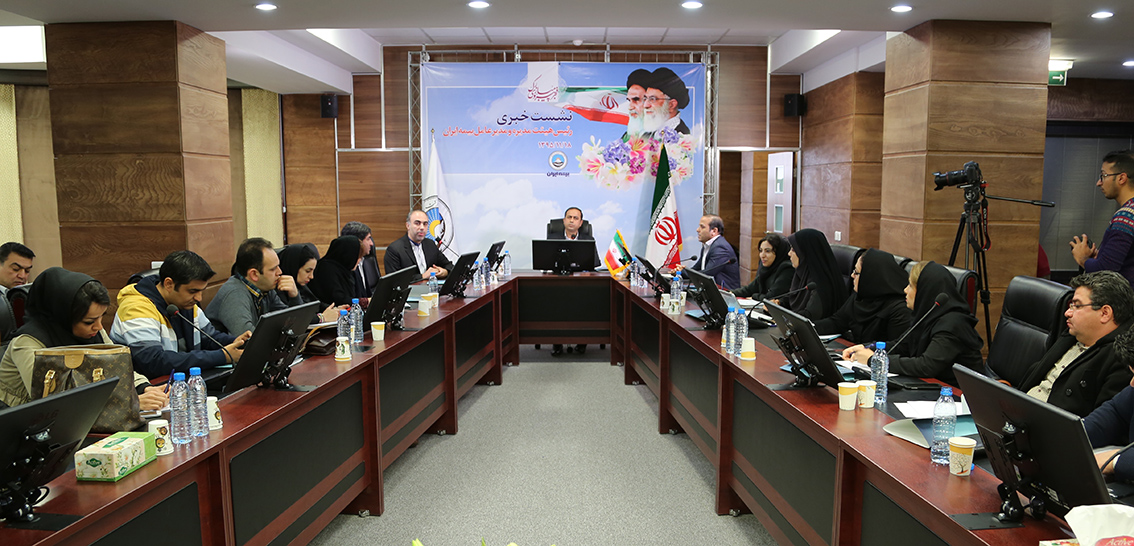Iran Insurance Company, the country’s biggest insurer, has come up with measures to boost its solvency, including plans for purchasing stocks of a major bank, the firm’s chief executive told a press conference on Monday.
“IIC used to own a bank before the [1979] Islamic Revolution, but it was merged into Bank Mellat. [Central Bank of Iran’s] regulations do not allow IIC to establish a new bank or revive the merged bank, therefore we are trying to purchase a bank’s shares,” Mohsen Pourkiani was quoted as saying by IIC’s website.
IIC is currently negotiating with a “profitable” bank, Pourkiani emphasized without mentioning the name of the bank.
The state-owned insurer has been trying to establish a bank for a long time. Back in 2011, IIC announced that it would start “Iran Insurance Bank” with an initial capital of 4 trillion rials ($104.3 million) in order to manage its investments.
IIC employees and brokers were set to become shareholders of the bank, since Iranian privatization law does not allow government entities to establish banks. The plan, however, fell flat.
Its attempts to revive a bank merger had also been unsuccessful, due to similar restrictions in the law. Iran Insurance Bank, as it was named then, was merged with nine other banks after the Islamic Revolution to form Bank Mellat.
IIC’s new venture is coming after the Central Insurance of Iran published the result of assessing insurance firms’ solvency, putting IIC at the lowest level–41%.
The Central Insurance of Iran required Iran Insurance Company to develop a one-year reform plan, reduce its sales and stop investing in low-profit businesses.
CII’s new plan is more likely to become successful as “there is no law barring the insurer from purchasing banks’ shares”, according to Parviz Khosroshahi, vice president of CII.
“Iran Insurance Company only needs to follow CBI regulations regarding the makeup of shareholders,” IRNA quoted him as saying.
Khosroshahi added that the regulator welcomes the move, as insurers need to invest their premium income in profitable businesses so that they would be able to meet their commitments to policyholders.
Bank-insurance partnership has proved to be profitable for both sides. A majority of banks in Iran either own their affiliated insurance firms or work close to privatized insurance companies.
Bank-affiliated insurers need banks to promote their services. But the case is different for Iran Insurance Company, which is already a well-established firm. The giant insurer needs to have better control over its investments.
Purchasing the shares of a bank seems logical, as banks are still the safest place for making investments in Iran.
Recapitalization
Pourkiani announced that his firm is trying to raise its capital from 34 trillion rials ($886.5 million) to 100 trillion rials ($2.6 billion), in line with plans to boost the company’s solvency ratio.
“The government will raise IIC’s capital in part by injecting cash and selling its shares in other insurance companies,” he said, noting that the Ministry of Economy has pledged to raise IIC’s capital by March 20.
The IIC’s chief executive noted that the insurer’s solvency ratio has dropped mainly because of the high volume of arrears that amount to 9 trillion rials ($234.6 million).
Pourkiani said insurers need to build their own hospitals so that they could manage their payments on medical and supplementary health insurance categories.
Health category accounts for 33% of IIC’s portfolio, 70% of which are spent on insurance coverage.
The insurer earned 85.4 trillion rials ($2.226 billion) during the nine months that ended on December 20, whereas its total paid claims amounted to 57 trillion rials ($1.48 billion).
Established in 1935, IIC is Iran’s largest insurance firm, with 3,770 agents, 205 branches inside the country and 12 branches overseas. The firm accounts for nearly half of the generated premiums by Iranian insurers.



